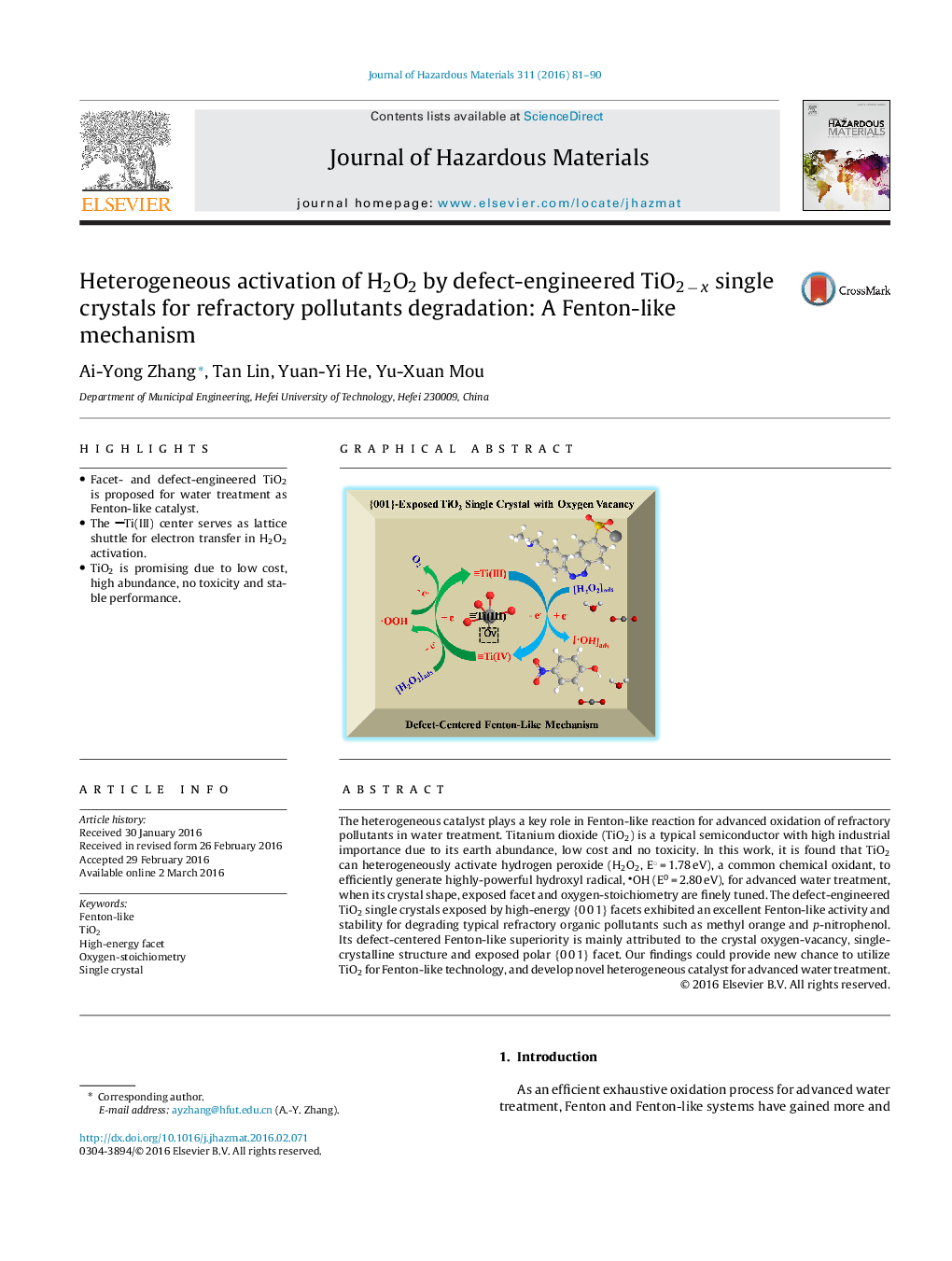| کد مقاله | کد نشریه | سال انتشار | مقاله انگلیسی | نسخه تمام متن |
|---|---|---|---|---|
| 575315 | 1453049 | 2016 | 10 صفحه PDF | دانلود رایگان |
• Facet- and defect-engineered TiO2 is proposed for water treatment as Fenton-like catalyst.
• The Ti(III) center serves as lattice shuttle for electron transfer in H2O2 activation.
• TiO2 is promising due to low cost, high abundance, no toxicity and stable performance.
The heterogeneous catalyst plays a key role in Fenton-like reaction for advanced oxidation of refractory pollutants in water treatment. Titanium dioxide (TiO2) is a typical semiconductor with high industrial importance due to its earth abundance, low cost and no toxicity. In this work, it is found that TiO2 can heterogeneously activate hydrogen peroxide (H2O2, E° = 1.78 eV), a common chemical oxidant, to efficiently generate highly-powerful hydroxyl radical, OH (E0 = 2.80 eV), for advanced water treatment, when its crystal shape, exposed facet and oxygen-stoichiometry are finely tuned. The defect-engineered TiO2 single crystals exposed by high-energy {0 0 1} facets exhibited an excellent Fenton-like activity and stability for degrading typical refractory organic pollutants such as methyl orange and p-nitrophenol. Its defect-centered Fenton-like superiority is mainly attributed to the crystal oxygen-vacancy, single-crystalline structure and exposed polar {0 0 1} facet. Our findings could provide new chance to utilize TiO2 for Fenton-like technology, and develop novel heterogeneous catalyst for advanced water treatment.
Figure optionsDownload as PowerPoint slide
Journal: Journal of Hazardous Materials - Volume 311, 5 July 2016, Pages 81–90
